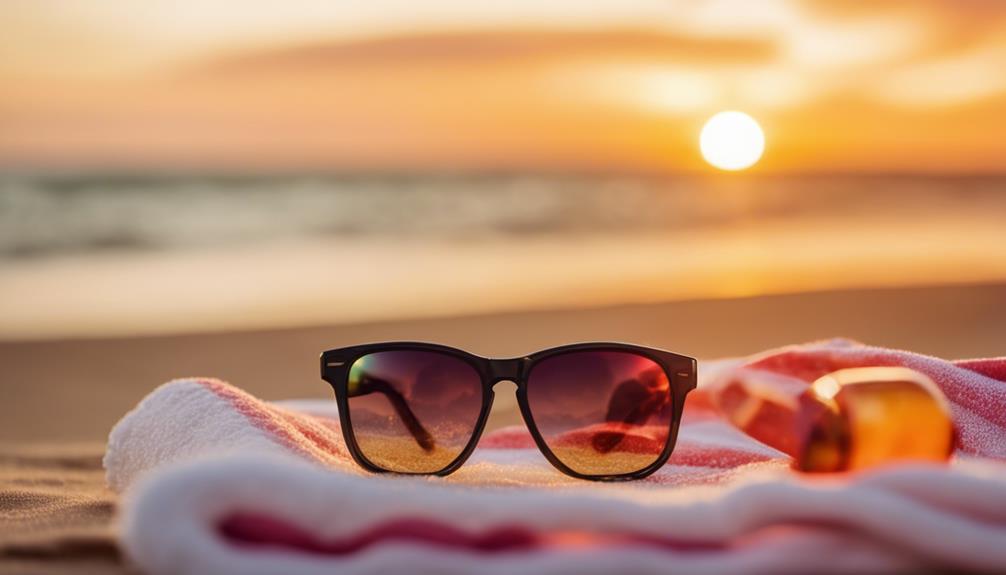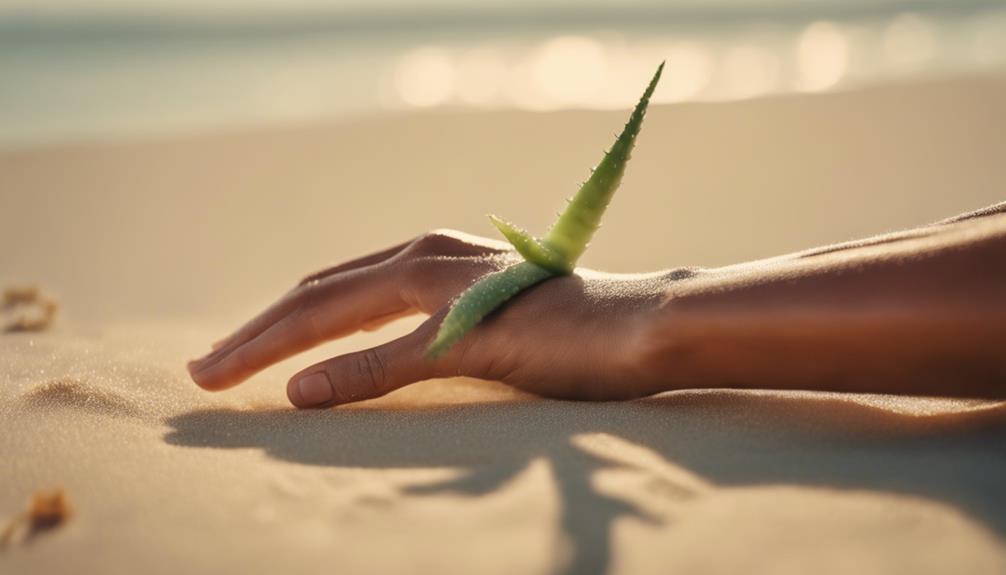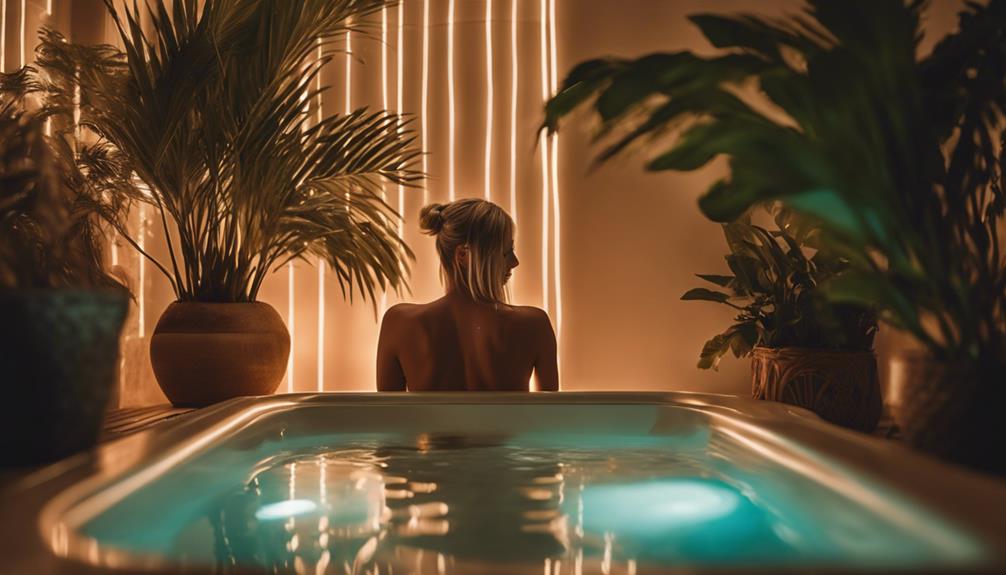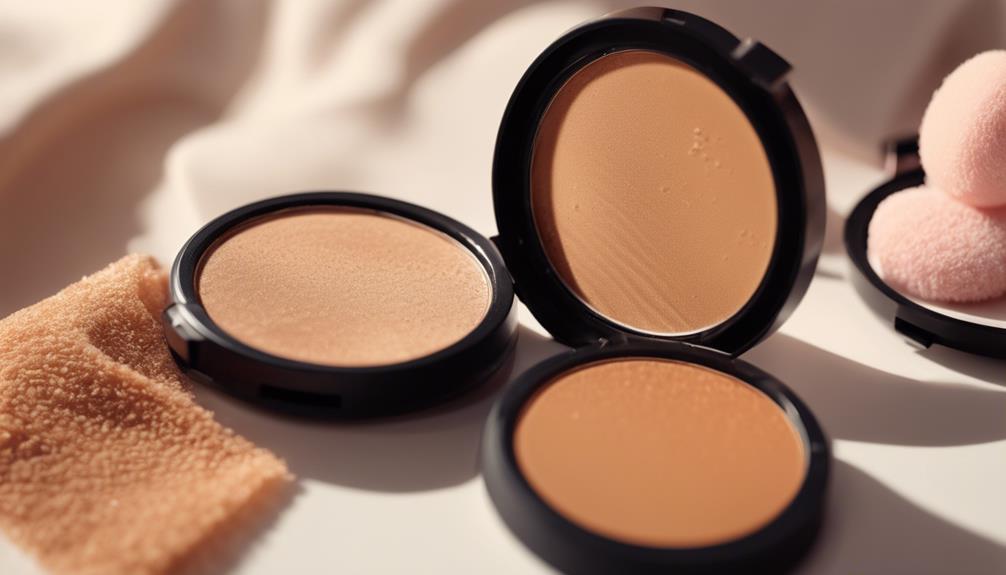When you use tingle tanning lotion, you're in for a warm, tingling experience that enhances your tan! This unique product boosts blood circulation, helping you break through those pesky tanning plateaus. You'll feel a warming sensation that means it's working—don't worry, redness fades within a few hours. If you're new, start small to let your skin adjust. Remember, factors like skin sensitivity can influence how long the tingle lasts. Keep hydrated and use soothing aloe vera to ease any discomfort. It's all about embracing the journey to that perfect, deeper tan, and there's so much more fun to explore!
Key Takeaways
- The duration of the warming sensation and redness from tingle tanning lotion varies based on skin sensitivity and individual reactions.
- New users should start with a small amount to allow their skin to adapt and minimize discomfort.
- Active ingredients in the lotion continue to work even after rinsing, contributing to the tan's longevity.
- Proper application is crucial; using excessive amounts may lead to increased irritation and longer-lasting redness.
Overview of Tingle Lotions
Tingle lotions are unique tanning products designed to enhance your tan by boosting blood circulation and oxygen delivery to your skin.
When you apply these lotions, you might feel a warm tingle, thanks to special ingredients like nicotinate and capsaicin. This sensation isn't just for fun; it's your skin's way of saying, “Hey, I'm working hard!”
Perfect for experienced tanners, these lotions help you break through tanning plateaus, promoting a deeper, longer-lasting glow.
Just a heads-up, though—if you've got sensitive skin, you might want to think twice or do a patch test first.
How to Apply Effectively

To get the most out of your tingle lotion, applying it correctly is key to achieving that deeper, longer-lasting tan. Follow these simple steps to make sure you're doing it right:
- Start Small: Use a dime-sized amount to avoid overwhelming your skin.
- Even Application: Rub the lotion in circular motions to prevent streaks—nobody wants a patchy tan!
- Patch Test: Always test a small area first to see how your skin reacts; it's better to be safe than sorry!
- Hands Off: Wash your hands thoroughly after applying to avoid any unwanted tingling on other areas.
With these tips, you'll be well on your way to flaunting that gorgeous glow!
Happy tanning!
Understanding Immediate Reactions

When you apply tingle tanning lotion, expect to feel a warming sensation and see some redness on your skin as signs that the product is working. This initial tingle might surprise you; it's like your skin's way of saying, “Hey, I'm ready to tan!”
The redness usually fades in a few hours, so don't worry if you look like a lobster for a bit. You might even feel a slight burn, especially if you've got a base tan already. But don't panic! It's just the lotion doing its job.
To make yourself comfy, consider using aloe vera or jumping into a cool shower. Keep hydrated, and you'll soon be basking in that gorgeous glow!
Factors Influencing Duration

Several factors can influence how long the effects of tingle tanning lotion last on your skin. Understanding these can help you maximize your tanning experience. Here are some key points to contemplate:
- Skin Sensitivity: If your skin's more sensitive, you might feel the tingle more intensely, which can affect duration.
- Tanning Experience: If you're new to tingle lotions, start slow; your skin will adapt over time.
- Active Ingredients: Even after rinsing, the ingredients keep working, providing benefits that linger.
- Application Amount: Using just the right amount guarantees you get the best results—too much could lead to irritation!
Managing After-Effects

Many users often experience temporary discomfort after applying tingle tanning lotion, but managing these after-effects can enhance your overall tanning experience.
First, don't panic if you feel a tingle or see some redness; that just means it's working!
To soothe any burn-like sensations, try applying some aloe vera—it's like a cool hug for your skin. If it gets too intense, a cold shower can wash away the discomfort faster than you can say “tan-tastic!”
Plus, staying hydrated is key, so drink plenty of water. Keeping your skin cool can make the whole process more enjoyable, turning that initial shock into a glowing, sun-kissed look you'll love showing off.
Just remember, it's all part of the tanning adventure!
Benefits of Regular Use

Regular use of tingle tanning lotion can greatly enhance your tanning results, giving you a deeper and more vibrant color over time.
You'll love how it transforms your skin, making it glow like you just came back from a tropical vacation!
Here are some benefits you can expect:
- Deeper Tan: The warming effect helps increase blood flow, which boosts your tan.
- Long-lasting Results: Regular application leads to a more enduring color.
- Break Through Plateaus: If your tan seems stuck, tingle lotion can help push it over the edge.
- Skin Stimulation: It keeps your skin feeling fresh and invigorated.
Additional Resources and Tips

Looking for more ways to enhance your tanning experience? You're in luck!
Check out articles that guide you on removing stubborn tanning from swimming sessions or preventing those pesky freckles while you tan.
Want to avoid that awkward white armpit look? There are tips for that, too!
Mixing different tanning lotions can add an exciting twist to your routine; just remember to spot-test first to dodge any reactions.
And don't forget, hydration is key! Drinking water not only keeps your skin looking fresh but can also help ease any tingling discomfort.
So, immerse yourself in these resources and make your tanning journey fun and fabulous!
After all, who doesn't want to glow like a bronze goddess?
Frequently Asked Questions
Can Tingle Tanning Lotions Be Used on the Face?
You shouldn't use tingle tanning lotions on your face, as they can cause irritation and discomfort. Instead, opt for products specifically designed for facial tanning to guarantee a safe and effective experience.
Are There Any Age Restrictions for Using Tingle Lotions?
You should be at least 18 to use tingle lotions safely, as younger skin may react more intensely. Always consult a dermatologist if you have concerns about sensitivity or skin reactions before using these products.
How Do I Store My Tingle Tanning Lotion?
To store your tingle tanning lotion, keep it in a cool, dark place away from direct sunlight and heat. Make certain the cap is tightly closed to maintain its effectiveness and prevent contamination.
Can I Use Tingle Lotions With Other Skincare Products?
Did you know nearly 70% of tanners combine products for better results? You can use tingle lotions with other skincare products, but make certain they're compatible. Always patch test to avoid unwanted reactions before full application.
Are There Any Specific Brands Recommended for Beginners?
If you're a beginner, consider brands like Australian Gold or Ed Hardy, as they offer milder formulas. Always patch test first to guarantee your skin reacts well before diving into the tanning experience.
Conclusion
Tingle tanning lotions can be your secret weapon for that sun-kissed glow you crave. Just remember, it's like a rollercoaster ride for your skin—exciting and a little intense! Say goodbye to dangerous tanning beds and give Tingle tanning lotions a try. They are specially formulated to give you a deep, dark tan without the harmful effects of UV rays. Plus, they are easy to apply and provide long-lasting results. So, why risk your skin’s health when you can achieve the perfect tan safely with Tingle tanning lotions?
With the right application and some patience, you'll be on your way to a deeper, longer-lasting tan that'll have you feeling like a beach superstar.
Embrace the warmth, manage the after-effects, and let your skin shine bright like a summer day!









